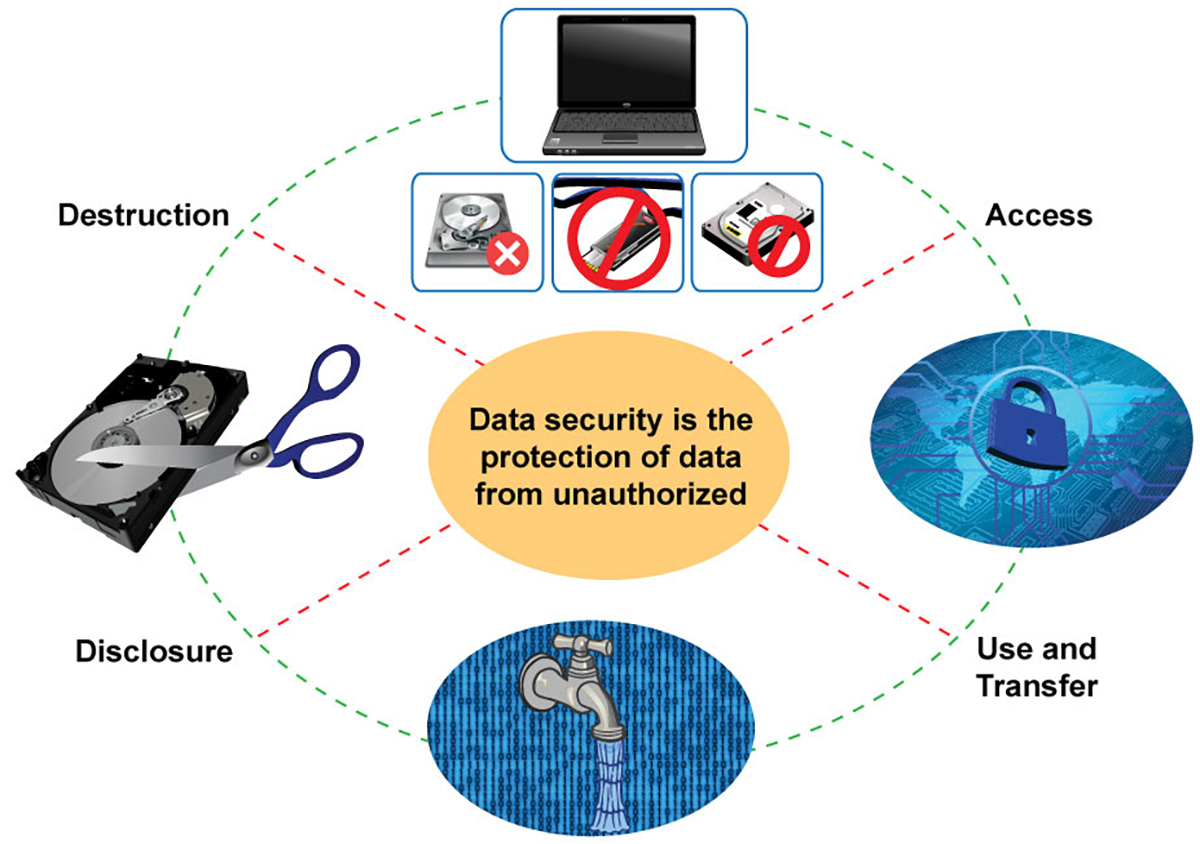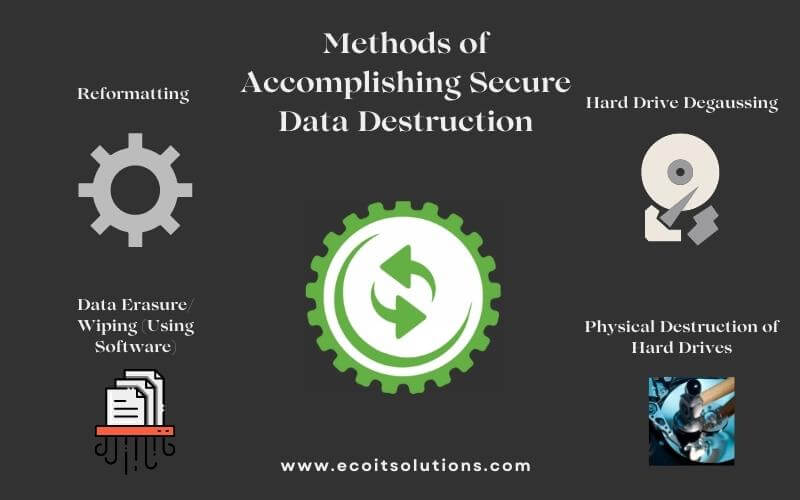How Robust Data Destruction Enhances Your Overall Cyber Security Procedures
How Robust Data Destruction Enhances Your Overall Cyber Security Procedures
Blog Article
Checking Out the Importance of Data Destruction in the Context of Computer System Safety Services and Protecting Confidential Information
In a period where information breaches are progressively usual, the significance of effective data damage can not be overemphasized. What approaches can organizations implement to boost their data destruction procedures?
Recognizing Information Damage
Information devastation is an essential component of computer safety and security that entails the long-term removal of data from storage devices to stop unauthorized access and potential data breaches. In an increasingly digital landscape, organizations face heightened threats associated with sensitive information being improperly accessed or exploited. Effective information destruction safeguards against these threats, ensuring that confidential dataâEUR" such as consumer info, copyright, and financial recordsâEUR" can not be recovered after disposal.
Recognizing the value of data damage prolongs beyond plain conformity with governing and legal frameworks; it is important for keeping organizational integrity and trust. When information is improperly taken care of or inadequately destroyed, the consequences can be extreme, including economic loss, reputational damage, and legal liabilities.

Methods of Data Eradication

One common approach is information cleaning, which entails overwriting existing information with arbitrary patterns multiple times. This technique makes the initial data irretrievable, making it a prominent choice for organizations looking for to protect confidential information.
Another method is degaussing, which uses a powerful magnetic field to interrupt the magnetic domains on storage tools, effectively eliminating the information. This technique is especially efficient for magnetic media however is not relevant to solid-state drives.
Physical destruction is another robust approach, including the shredding or crushing of storage devices. This method warranties that data recovery is virtually impossible, making it suitable for extremely delicate info.
Finally, encryption can function as a complementary strategy to information removal. By securing data prior to deletion, organizations can include an extra layer of safety, making sure that even if remnants are recovered, they continue to be hard to reach without the decryption key. Each approach ought to be selected based on the degree of data level of sensitivity and the particular safety and security demands of the organization.
Legal Conformity and Data Protection
Organizations should browse a complex landscape of lawful requirements associated with data safety, especially after carrying out approaches of information removal. Various laws, such as the General Information Security Guideline (GDPR) and the Health Insurance Coverage Portability and Responsibility Act (HIPAA), enforce stringent standards on just how companies must deal with and get rid of of delicate information. Failing to comply with these policies can result in considerable lawful effects, consisting of significant penalties and reputational damages.
Information devastation procedures must be carefully documented to demonstrate conformity with applicable laws and standards. This documentation not only serves as proof of adherence to lawful commitments yet additionally highlights a dedication to securing delicate information. Organizations official site should additionally develop clear plans pertaining to information retention and damage timelines, making sure that data is not held longer than required.

Furthermore, routine audits and assessments of information damage practices are crucial to maintain conformity and adjust to developing lawful frameworks (data destruction). By proactively resolving legal requirements, organizations can minimize dangers related to data violations and demonstrate their dedication to information safety. Ultimately, prioritizing legal conformity in information destruction procedures is not simply a regulative commitment, however an essential facet of a robust data protection technique
Effect On Company Credibility
The reputation of a company can be dramatically influenced by its technique to information destruction and administration. In today's electronic landscape, where information violations can happen at any kind of minute, the failure to properly take care of delicate details can bring click now about severe repercussions. Organizations that improperly take care of information devastation danger subjecting private client information, which not only violates privacy laws but also deteriorates trust amongst stakeholders and customers.
A ruined online reputation can lead to lowered client loyalty, as clients come to be hesitant to engage with an organization that has actually shown carelessness in safeguarding their data. Adverse promotion bordering a data violation can have a long-term impact, as prospective customers could be prevented by the perceived absence of safety and security. This can lead to a straight decrease in revenue and market share.
Furthermore, companies that prioritize information damage as component of their safety strategy can improve their credibility by showcasing their dedication to guarding sensitive details. By embracing rigorous data administration techniques, companies can not just reduce dangers but likewise place themselves as credible entities in their respective markets, therefore reinforcing their overall brand photo.

Finest Practices for Secure Disposal
Executing best techniques for safe disposal of information is vital for mitigating threats linked with data read what he said violations and ensuring compliance with personal privacy policies. Organizations should take on a detailed data disposal plan that details procedures for both digital and physical information damage.
For physical data storage space devices, such as hard disks, shredding or degaussing is advised to avoid information healing. Additionally, companies ought to maintain a chain of custodianship documentation during the disposal process, guaranteeing responsibility and traceability of disposed items.
For digital data, making use of software that abides by sector requirements for information wiping is vital. This software must overwrite existing data several times, making recovery essentially difficult. It is also crucial to validate the effectiveness of the data devastation procedure through audits or third-party assessments.
Educating employees on secure disposal techniques adds one more layer of security, as human mistake can commonly bring about information exposure. Frequently evaluating and updating disposal plans makes certain alignment with developing laws and technical improvements. By carrying out these best methods, organizations can significantly lower the danger of unauthorized information gain access to and improve their general data security strategy.
Verdict
To conclude, data destruction is a basic element of computer system protection solutions that makes certain the protection of secret information from unapproved gain access to. Carrying out reliable methods of data removal, sticking to legal conformity, and recognizing the effect on business credibility are important parts of a thorough information safety approach. By embracing best techniques for safe disposal, organizations can foster trust fund with customers and secure sensitive information, eventually adding to a much more protected electronic landscape.
In an age where data violations are increasingly usual, the relevance of effective information damage can not be overemphasized.Information destruction is a vital part of computer system protection that includes the irreversible elimination of information from storage space devices to protect against unauthorized accessibility and prospective data breaches. Organizations ought to likewise develop clear plans relating to data retention and destruction timelines, making certain that data is not held longer than essential.
By proactively addressing lawful demands, companies can mitigate dangers linked with data violations and demonstrate their commitment to data safety (data destruction). Inevitably, focusing on legal compliance in information devastation procedures is not just a governing commitment, yet an essential aspect of a robust data safety method
Report this page